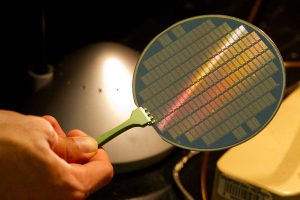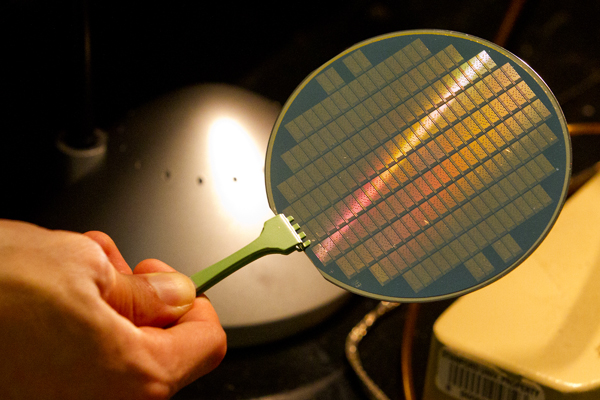
Max Shulaker a grad student at Stanford University shows off the new material used to make new computers on Monday August 19, 2013 at the Stanford School of Engineering. ( Photo by Norbert von der Groeben )
Making computer parts smaller and smaller is the reason why your average laptop is a zillion times more powerful than computers from 50 years ago that used to fill up an entire room. The basic component of a computer chip is a transistor which is a switch that turns off and on. Today computer chips have close to two billion (2,000,000,000) transistors and counting. New materials including carbon nanotubes are being used to build different kinds of transistors. The first carbon nanotube transistors were made a few years ago (2013) at Stanford University and story was recently made into a video. This work was supported by the National Science Foundation
See the video here

